I will never forget the first time I saw the Budva Riviera, almost 50 years ago. Coming from the Netherlands, I was traveling via Titograd to Budva on a local bus, ready for a new challenge in my life: a seasonal job at the reception desk of the Avala Hotel. All of a sudden, the bus passed over the coastal mountains and I was struck by a glorious view – down there, on the other side of the green slopes overgrown with bright yellow broom was the blue Adriatic Sea and a little town looking like a scale model: Budva.
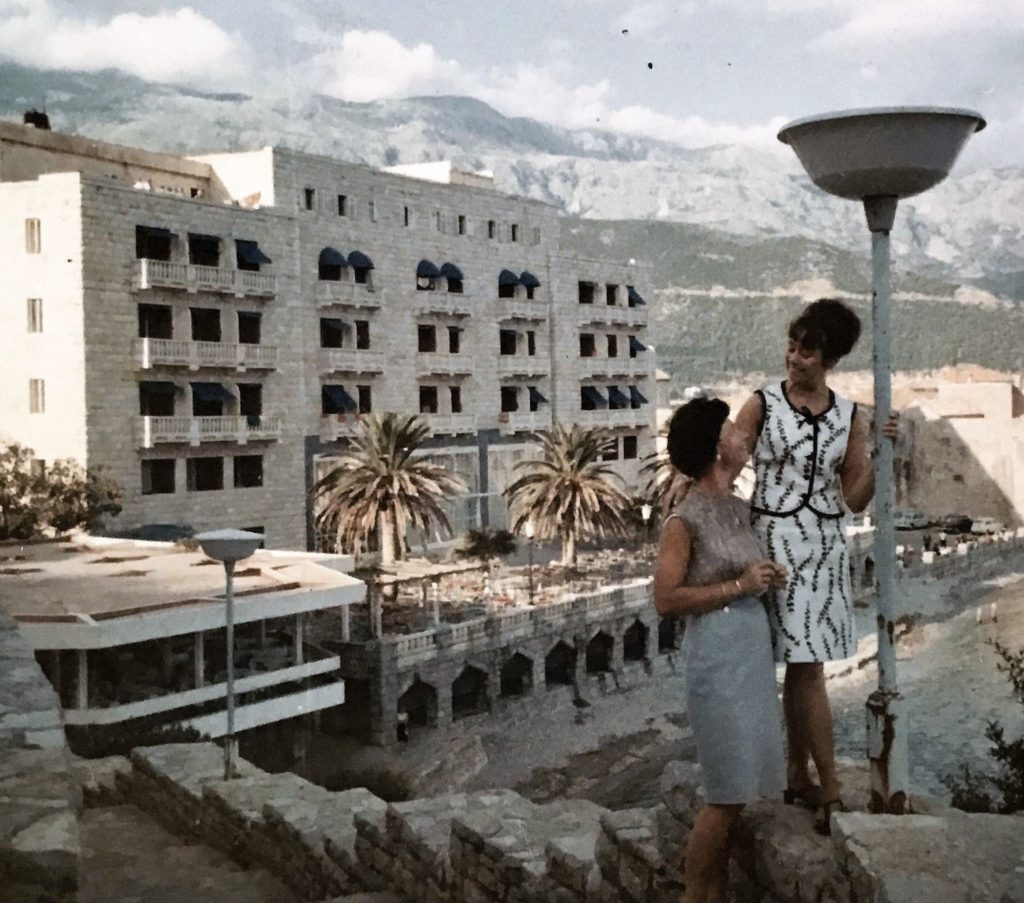 I instantly fell in love with the old town and its Mediterranean atmosphere, the small fishing harbor and the friendly local people.
I instantly fell in love with the old town and its Mediterranean atmosphere, the small fishing harbor and the friendly local people.
The majestic five-star Avala Hotel was full of tourists from Western Europe: German, French, British, Dutch… , who spent the evenings on the spacious terrace overlooking the sea, listening to famous Yugoslav singers and musicians.
The hotel didn’t have a swimming pool, but it was not far to the picturesque and quiet Mogren Beach. At that time, there were no warning signs ‘Beware of falling rocks’ at the beginning of the rocky path, as the hill above the beach was still free of buildings affecting the stability of the soil.
I thought I had found a paradise… In my spare time, I used to laze and sunbathe on Mogren Beach or take a long walk along the sea, but I also liked to sit under the high palms of the open-air bar next to the sea, writing post-cards to my parents and friends. It was a great time!
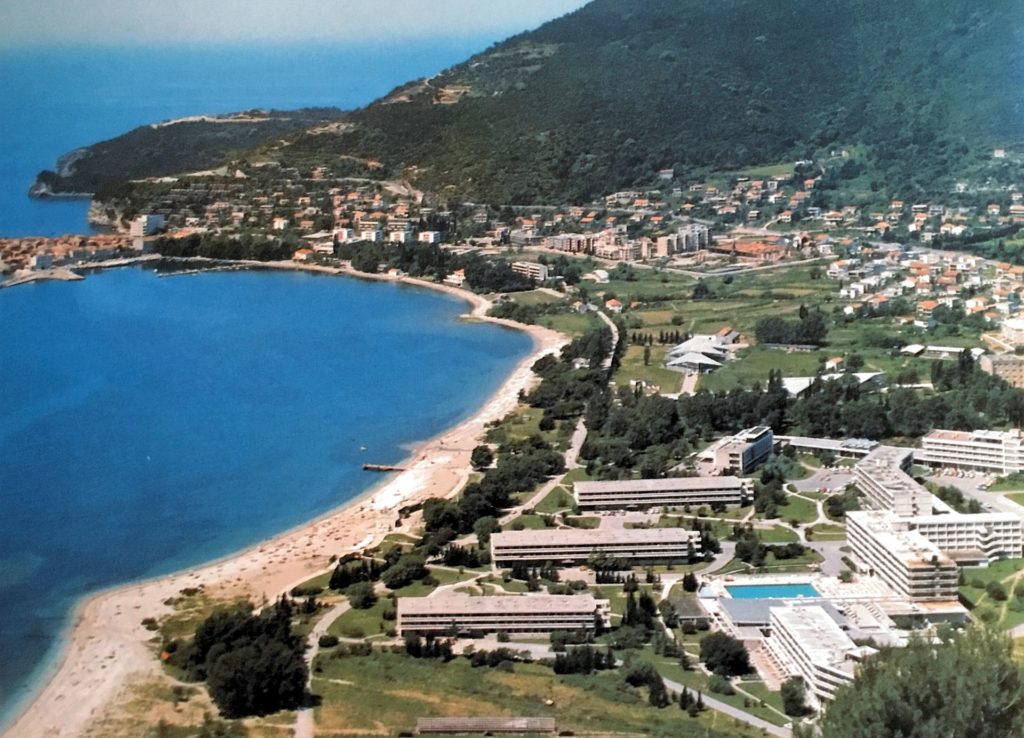 Recently, when I was looking for some information in Paul’s travel book collection, I found several old monographs on Montenegro and Yugoslavia. Photos of the Montenegrin Coast, made in the 1970s, brought back pleasant memories, but also the awareness that many things have changed since then … and not always to the better!
Recently, when I was looking for some information in Paul’s travel book collection, I found several old monographs on Montenegro and Yugoslavia. Photos of the Montenegrin Coast, made in the 1970s, brought back pleasant memories, but also the awareness that many things have changed since then … and not always to the better!
Maybe some of you still remember how the Budva Riviera looked like in those times, before the big earthquake in 1979 and before the economic collapse caused by the wars in Yugoslavia during the 1990s. I’ll try to be objective, but believe me: it was wonderful!
The new hotel complexes of Slovenska Plaža and Bečići were the product of careful urban planning with plenty of green spaces for rest and recreation and without huge high-rise buildings obstructing the sea view. Unfortunately, they were completely destroyed by the 1979 earthquake.
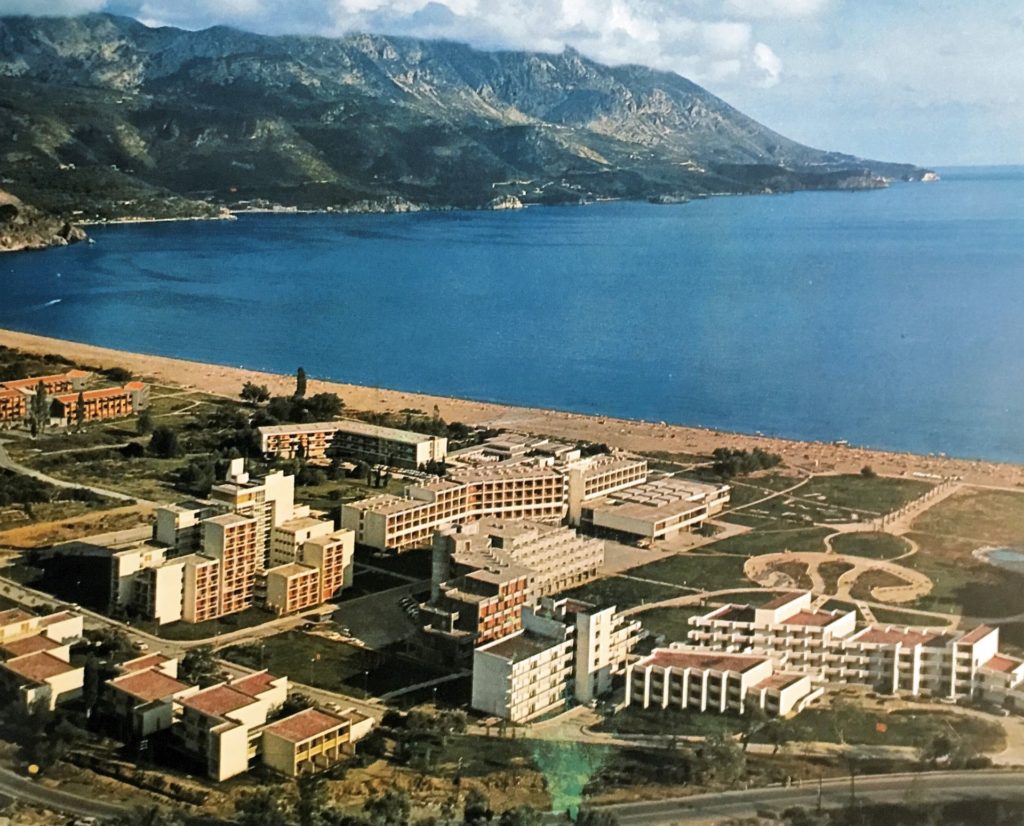 The text in one of those old monographs emphasizes all the tourist qualities of the Budva Riviera: eighteen beaches, ten (‘socially-owned’) hotels, a ‘nature reserve’ on the Sveti Nikola island, a music festival, folklore performances… And of course, mention is also made of the future. As the book says: ‘Future investments in Montenegro’s tourism and catering until 1980 anticipate an increase of accommodation capacities by another 17,000 beds, many of which will be created in the continental part of the country.’
The text in one of those old monographs emphasizes all the tourist qualities of the Budva Riviera: eighteen beaches, ten (‘socially-owned’) hotels, a ‘nature reserve’ on the Sveti Nikola island, a music festival, folklore performances… And of course, mention is also made of the future. As the book says: ‘Future investments in Montenegro’s tourism and catering until 1980 anticipate an increase of accommodation capacities by another 17,000 beds, many of which will be created in the continental part of the country.’
But there was something else that caught my attention: ‘One of the biggest tourist facilities in Budva Municipality will be the new hotel complex on Jaz Beach. The adaptation of an earlier adopted project, according to which there will be 2,000 beds in A class hotels, 2,500 in B class hotels and 1,000 at the camping site (!!), is in progress.’ What happened to this project?
 My life in Budva was beautiful in the 1970s. I got a job in the sales department of the ‘socially-owned’ hotel enterprise ’Montenegroturist’. I married and my children spent their early childhood in a healthy environment on the seaside. There was a bright future ahead of us!
My life in Budva was beautiful in the 1970s. I got a job in the sales department of the ‘socially-owned’ hotel enterprise ’Montenegroturist’. I married and my children spent their early childhood in a healthy environment on the seaside. There was a bright future ahead of us!
How nice it was to roam through the gardens of the Miločer Hotel or explore the luxurious hotel-island of Sveti Stefan in the hope to see a famous actor or princess. In those times, Sveti Stefan was open to visitors a few hours per day, against payment of a small entrance fee.
In the 1970s, Petrovac was an idyllic village in a secluded bay. The few low-rise hotels and villas were usually occupied by elder guests, who loved the peaceful atmosphere, the red beach and the romantic promenade with old stone fishermen’s houses and traditional seafood restaurants.
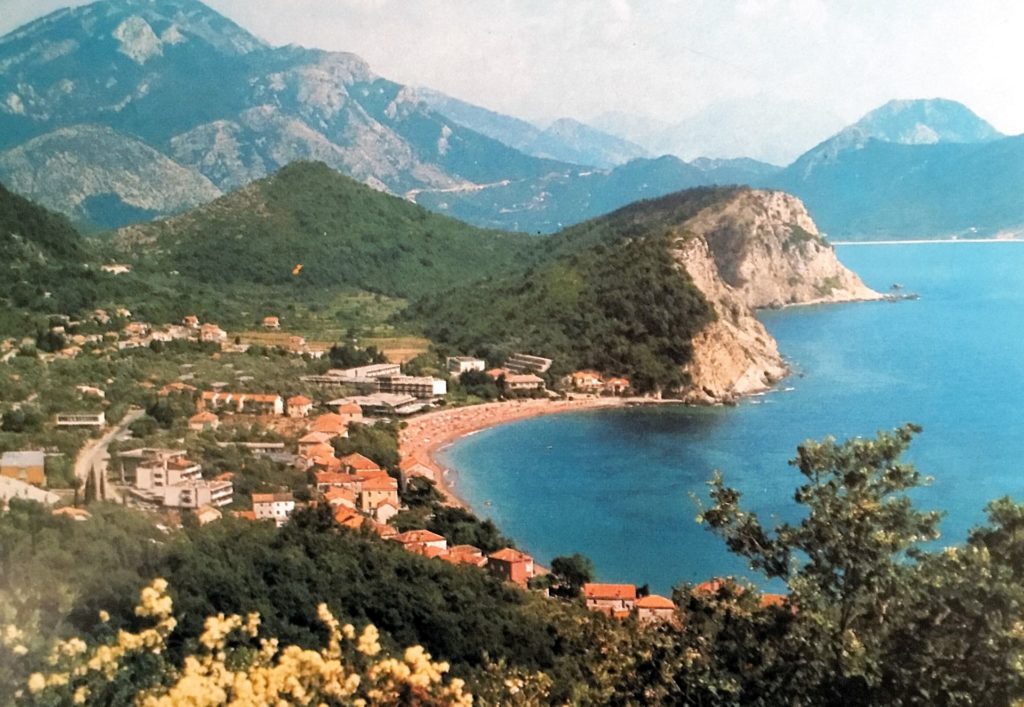 No need to compare this old photo of Petrovac with today’s crowdy tourist resort, where more and more high-rise structures are being erected directly along the beach, thus obstructing the view of many other buildings located uphill. What a pity that Petrovac has not escaped the effects of the intensive tourism development on the coast!
No need to compare this old photo of Petrovac with today’s crowdy tourist resort, where more and more high-rise structures are being erected directly along the beach, thus obstructing the view of many other buildings located uphill. What a pity that Petrovac has not escaped the effects of the intensive tourism development on the coast!
Nostalgia for the 1970s… I know, the 1979 earthquake destroyed many houses and hotels, the wars in the 1990s brought tourism to a complete standstill and I should be happy that the country has recovered.
But… I am certainly not the only one who regrets the overcrowding of the Montenegrin Coast and the growing development gap between the northern and southern part of Montenegro…
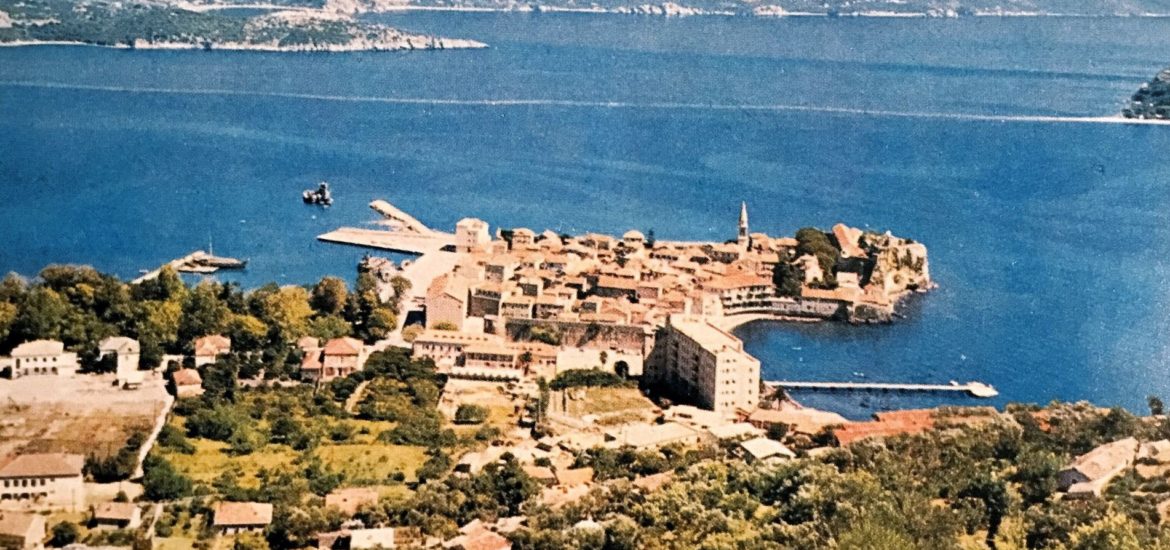
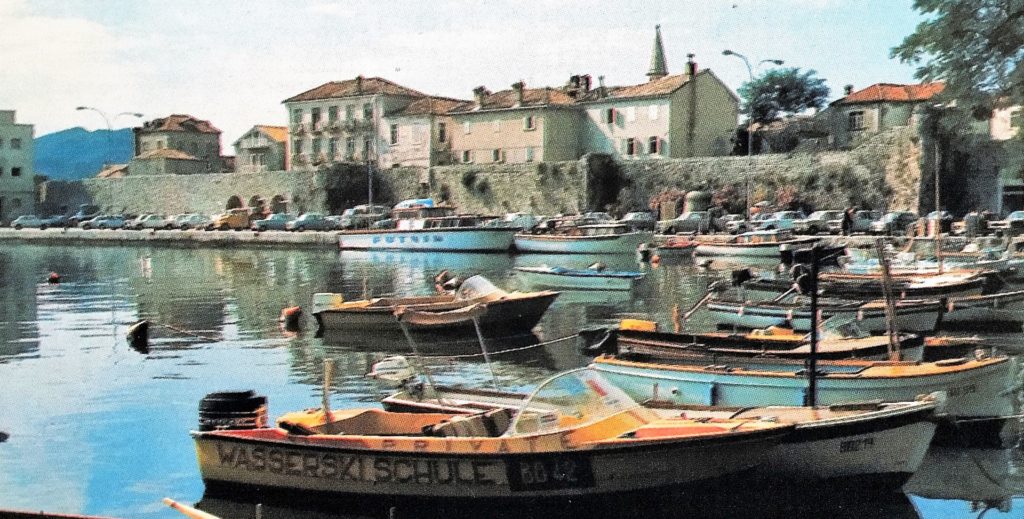
I’m from Switzerland and I have been living in Becici part time there for 6 years now. Although I haven’t been in Montenegro in the 1970ies I totally agree with you!! Unfortunately the greedy people will slowly (or have already!) destroy the wonderful coast.
Sadly, this unchecked development is to be expected along the Adriatic coast.
It’s so beautiful and substantially cheaper than neighbouring Croatia.
Plus much more accessible with cheap flights into Podgorica and Tivat these days.
But when they start putting touristy developments into formerly pristine wildlife locations like Lake Skadar –
then my blood really starts to boil.
[…] places for a day trip in spring or autumn. And even in winter it is nice to spend some time on the Budva Riviera when the weather is […]
I just came upon your post. I was in Montenegro in 1975 when I worked as a multi-lingual tour guide for Atlas (which you may remember).
There were a few hotels in Becici at that time; along with the Avala. So much calmer. I lived with a fisherman’s family in Budva Stari Grad.
Sadly I was in Belgrade when the earthquake hit. I felt it there. When I went back to Budva later it was so different. But nevertheless the inherent beauty remains.